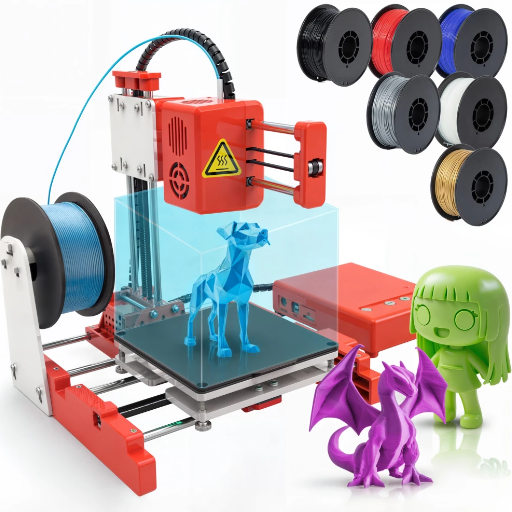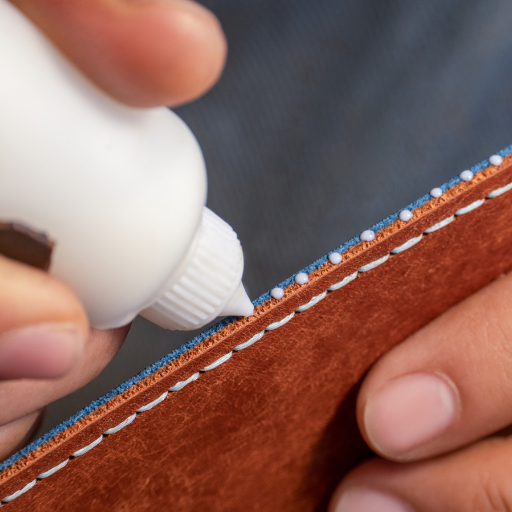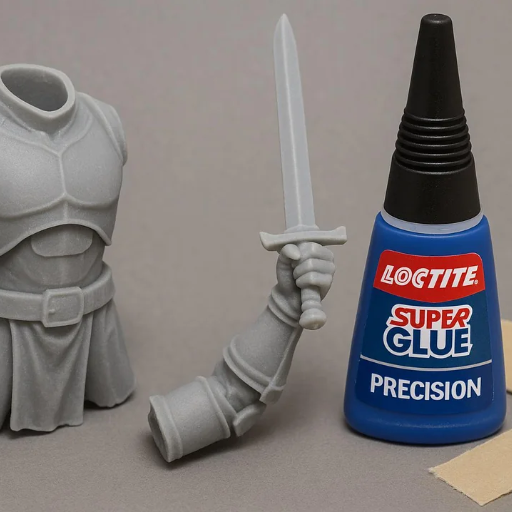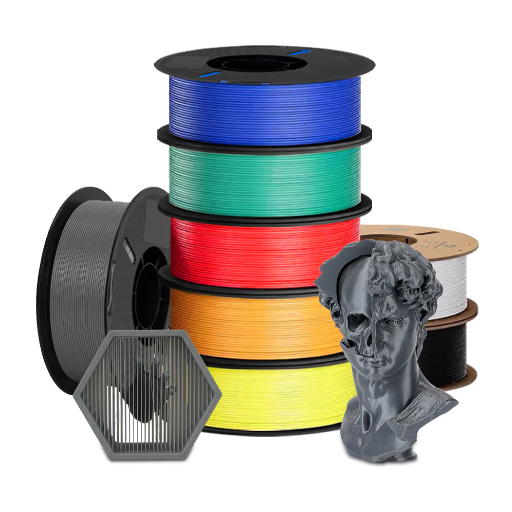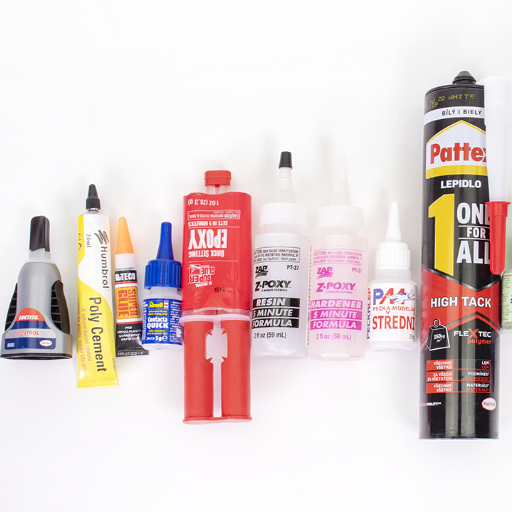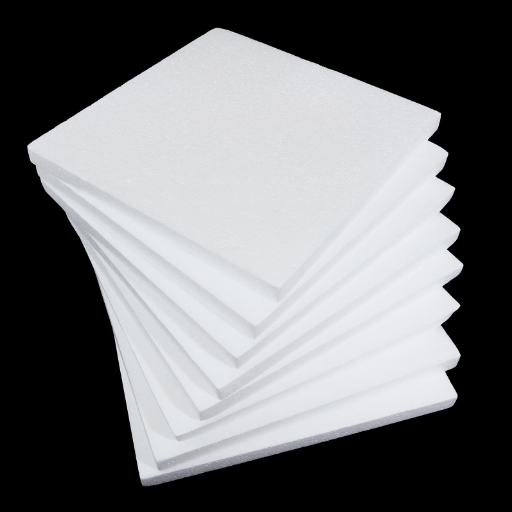When it comes to masonry projects, selecting the right brick adhesive can make or break the success of your endeavor. Whether you’re tackling a DIY project, repairing an outdoor structure, or working on a professional construction job, understanding the different types of adhesives and their specific applications is crucial. This guide will walk you through everything you need to know about brick adhesives, from their key features and benefits to how they compare to traditional mortar. By the end of this article, you’ll be equipped with the knowledge to make informed decisions and ensure your masonry projects stand the test of time.
What is the Best Glue for Brick?

When it comes to selecting the best glue for brick, the choice depends on the specific application and conditions. For general use, construction adhesives such as Loctite PL 500 or Gorilla Heavy Duty Construction Adhesive are reliable options, offering strong bonds for outdoor and indoor projects. If you’re dealing with high-temperature environments, a heat-resistant adhesive like Rutland’s High Heat Silicone Sealant is ideal. For smaller repairs, epoxy-based adhesives or polyurethane glue can provide precise and durable results. Always consider factors such as weather exposure, load-bearing requirements, and material compatibility when making your selection.(Recommended: Loctite Glue)
Understanding Different Types of Adhesive
Adhesives are used in a wide array of industries or even in the household, as there are specialized products catering to particular needs. Epoxy adhesives have a reputation for high strength which makes them suitable for bonding heavyweight objects, or carrying out structural repairs. They work well with metal, wood, and some plastics and can withstand chemicals and heat. Polyurethane adhesives are easier to work with because of their flexibility, and powerful bonds, which enables them to excel in waterproof applications such as in furniture or boat repair. Silicone adhesives are among the top choices for waterproofing because of their flexibility and resistance to heat. These products work well for sealing gaps, doing some automotive repairs, and glass projects. Other specialized choices, like cyanoacrylate, are non-porous and work well with super glue but fail to withstand stress or moisture over time, making them brittle.
Considering the context for material selection in a project, the environmental factors, and other needs is vital when choosing adhesive types. Preparing the surfaces and following curing times guarantees stronger bonds.
Features of a Strong Brick Adhesive
High Bond Strength
A strong brick adhesive must offer exceptional bond strength to ensure bricks remain securely in place, even under high stress or load conditions. This is especially critical in applications like wall construction or repairs, where durability is vital.
Weather Resistance
Brick adhesives should withstand various environmental factors, including rain, extreme temperatures, and UV exposure. Weather-resistant adhesives ensure long-lasting performance and prevent deterioration due to moisture or heat.
Versatility Across Surfaces
The adhesive should be compatible with a range of surfaces, including concrete, stone, and ceramic. This flexibility is essential for diverse construction or repair needs that involve mixed materials.
Quick Curing Time
A shorter curing time is often beneficial, especially for projects requiring faster completion. Quick-curing adhesives reduce downtime and increase efficiency without compromising bond integrity.
Easy Application
A good brick adhesive is designed for user convenience, often available in cartridge forms for precise application with minimal mess. Products with smooth flow and easy cleanup simplify the work process.
Durability Under Stress
Adhesives should tolerate structural shifts, vibrations, or pressure over time. The ability to maintain adhesive strength under challenging conditions is key to reliability.
These features collectively define an effective brick adhesive, ensuring robust, long-lasting bonds tailored to a variety of construction and repair demands.
Comparing Epoxy and Masonry Glue
When selecting between epoxy and masonry glue, it is essential to consider their unique properties and intended applications.
1. Strength and Durability:
Epoxy is renowned for its exceptional strength and resistance to harsh conditions, including heat, chemicals, and heavy stress. This makes it ideal for heavy-duty applications where a long-lasting, highly reliable bond is required. Masonry glue, while strong, is better suited for lighter tasks like securing bricks, tiles, or decorative elements. It prioritizes ease of use over the extreme strength epoxy offers.
2. Application Process:
Masonry glue is user-friendly and often comes in tubes for precise application, requiring no mixing and allowing for quick, straightforward use. Epoxy, on the other hand, typically involves mixing two components (resin and hardener) before application, which can be more time-intensive but provides superior adhesion once cured.
3. Flexibility and Adaptability:
Epoxy forms a rigid bond when cured, making it perfect for applications where minimal movement is expected. Masonry glue, however, retains some flexibility, making it suitable for bonding materials that may experience slight shifts or vibrations over time.
4. Drying and Curing Time:
Masonry glue sets quickly and requires minimal curing time, enabling fast repairs or installations. Epoxy may require more extensive curing, often taking several hours or even days to fully harden, depending on the specific formulation.
5. Best Applications:
Epoxy works best for structural repairs, sealing cracks in concrete, or adhering surfaces where maximum strength is non-negotiable. Masonry glue excels in smaller, detail-oriented projects such as attaching veneers, tiles, or undertaking quick fixes.
Ultimately, choosing between epoxy and masonry glue depends on the scope and requirements of your project. For heavyweight, industrial-strength bonding, epoxy stands out as the superior choice. For convenience and routine brick repairs, masonry glue offers a quicker, simpler alternative.
How to Choose the Right Brick Glue?

When choosing the right brick glue, consider the specific needs of your project. For heavy-duty applications requiring maximum durability and resistance to extreme conditions, epoxy is the ideal choice. It ensures a strong, lasting bond for large-scale or structural projects. On the other hand, for smaller repairs, simpler tasks, or projects needing faster application, masonry glue is a more practical solution. Assess the materials, load-bearing requirements, and environmental factors to determine which adhesive best suits your needs.
Factors to Consider When Choosing the Right Brick Adhesive
Type of Project
Determine whether your project is structural or non-structural. For heavy-duty, load-bearing tasks such as building walls or laying bricks for outdoor patios, mortar or construction adhesive is ideal. For lighter repairs or decorative projects, masonry glue can suffice due to its ease of use and faster application.
Material Compatibility
Ensure the adhesive is compatible with the materials you’re working with. Some adhesives are specifically designed for use with bricks, while others work better with mixed surfaces like stone, concrete, or ceramic. Always check the product label for supported materials.
Weather and Environmental Conditions
Adhesives perform differently under varying environmental factors. Choose a product that can withstand the specific conditions of your project, such as extreme temperatures, moisture, or exposure to UV rays, to ensure durability.
Strength and Longevity Requirements
Evaluate the adhesive’s holding capacity and lifespan based on your project’s needs. Structural applications typically require high-strength adhesives, while minor fixes may benefit from quicker-setting options that are less robust but more convenient.
Ease of Application
Consider the complexity of applying the chosen adhesive. Some projects may benefit from the simplicity of pre-mixed glue, while others require more labor-intensive preparation and application processes, like mixing mortar.
Understanding Cure Time and Bond Strength
Cure Time refers to the period an adhesive needs to reach its full set strength and stability. This process varies based on the type of adhesive, environmental conditions, and the materials being joined. For instance, epoxy adhesives may require several hours to days to cure fully, while some polyurethane adhesives cure faster due to their reaction with moisture in the air. It’s crucial to follow the manufacturer’s instructions regarding minimum cure times before applying stress to the bond.
Bond Strength is the measure of how well an adhesive holds materials together, typically evaluated under various conditions like tension, shear, and peel. Factors that influence bond strength include material compatibility, surface preparation, and the type of adhesive used. For optimal results, surfaces should be clean, dry, and free of contaminants, ensuring the adhesive can adhere securely. Testing bond strength after full cure time is recommended to verify durability and performance under expected loads.
Choosing Between Outdoor Use and Interior Applications
It is important to review the actual environmental conditions and performance requirements when selecting adhesives for outdoor and indoor use. For outdoor purposes, the adhesives have to be weatherproof, meaning that they should be able to cope with temperature, humidity, as well as UV light changes. Make sure that the adhesive claims that it is waterproof or UV-stable because those products would be the most appropriate. For indoor purposes, a wider range of adhesives can be used because such extreme environmental conditions will not be experienced. The type of material, load demands, and even color or finish aesthetic considerations would help in the selection process. Whatever the case, each situation needs an examination of the given environment to be conducted and what is known as durability and performance requirements expectations have to be established.
How to Apply Brick Adhesive for Best Results?

Applying brick adhesive correctly ensures a strong and lasting bond. Follow these steps for optimal results:
Surface Preparation: Clean the surfaces thoroughly, removing dust, dirt, and grease. Ensure the area is dry and free from loose particles.
Adhesive Selection: Choose an adhesive suitable for your specific application and environmental conditions, considering factors like load and temperature exposure.
Application: Apply the adhesive evenly using a caulking gun or trowel, depending on the adhesive type. Maintain consistent coverage for uniform adhesion.
Press and Align: Firmly press the brick into place and ensure proper alignment before the adhesive sets.
Curing Time: Allow ample curing time per the manufacturer’s instructions to ensure a secure bond.
Adhering to these steps guarantees a durable and professional finish.
Common Mistakes When Using Construction Adhesive
Skipping Surface Preparation: Failing to clean and dry surfaces properly can compromise adhesion. Dust, grease, or moisture creates barriers that weaken the bond.
Using the Wrong Adhesive: Not all adhesives are suitable for every material. Choosing the wrong type can lead to poor performance or failure over time.
Applying Too Much or Too Little Adhesive: Over-applying can cause excess adhesive to ooze out, while under-applying may result in insufficient bonding strength.
Ignoring Temperature and Humidity Conditions: Extreme temperatures or high humidity can affect the adhesive’s curing process, leading to weak bonds.
Rushing the Curing Process: Not allowing sufficient time for the adhesive to cure as per the manufacturer’s instructions can result in an unstable or temporary bond.
Uneven Application: Applying the adhesive unevenly or inconsistently can reduce overall adhesion strength, causing structural instability.
Avoiding these common mistakes helps ensure strong, reliable, and long-lasting results when working with construction adhesive.
Manufacturer’s Instructions for Adhesive Application
Preparation for Surface
All surfaces must be cleaned, dried, and degreased to remove any dust or loose materials above and below surface level. Use sandpaper or a cleaner that will not leave behind any residue to clean surfaces to create greater adhesion.
Way of Doing Correctly
With the product in question, the adhesive must be applied in either straight lines or zig zags following guidelines. Where possible, it is recommended to adhere to the range of width and thickness from the manufacturer’s instructions to ensure proper bonding of sealant.
Pressure and Positioning
Bond the surfaces immediately after adhesive application. If necessary, apply both firm hold and clamping pressure to keep materials stationary. This will allow for even distribution of adhesive while also eliminating gaps.
Time for Curing
As closely as possible adhere to the time given by the manufacturer for curing the adhesive and try to avoid deviating too far away from it. Curing times will always vary due to surrounding environmental conditions, surface materials, and type of adhesive being used.
Consider the Environment
Always try to stay within the set boundaries of temperature and humidity relative to where the adhesive is applied. Keeping any workspace within recommended parameters will ensure the bonding process is as effective as possible.
What are the Best Adhesives for Brick Masonry?

When selecting the best adhesive for brick masonry, consider factors like the type of project, environmental conditions, and load requirements. Commonly recommended adhesives include:
Construction Adhesive
Strong and versatile, construction adhesives are ideal for securing bricks in non-load-bearing applications, such as decorative projects or small repairs.
Polyurethane Adhesive
Known for its high bond strength and weather resistance, this adhesive performs well for both indoor and outdoor brickwork, even in extreme conditions.
Epoxy Adhesive
Epoxy provides an exceptionally durable bond, making it suitable for heavy-duty masonry applications like structural repairs or reinforcement.
Silicone Adhesive Sealant
Ideal for sealing gaps and creating weatherproof joints, silicone adhesive is a great choice for projects requiring flexibility and insulation.
Each adhesive has its strengths, so evaluate your specific needs to make an informed choice. Always test a small area first and follow the manufacturer’s guidelines for proper application.
Top Professional Construction Products
When selecting professional construction products, it’s essential to choose reliable materials designed for durability, safety, and efficiency.
Quikrete Mortar Mix
Quikrete Mortar Mix is a versatile and high-quality product widely used for bricklaying, block construction, and repairing existing masonry. Its ready-to-use formula ensures convenience, while delivering excellent adhesion and strength for both residential and commercial projects.
Loctite PL Premium Construction Adhesive
This polyurethane-based adhesive stands out for its superior bonding strength and versatility. It works on materials like wood, concrete, brick, and stone, making it a go-to choice for a variety of heavy-duty applications. Loctite PL Premium is moisture, heat, and cold-resistant, allowing for long-lasting performance in challenging environments.
Sashco Big Stretch Caulk
Ideal for sealing gaps and cracks, Sashco Big Stretch is a flexible and weatherproof sealant that adapts to movement without cracking or losing its bond. It’s great for use on brick, wood, and siding, offering professional-grade results that can withstand fluctuating temperatures and environmental conditions.
These products are consistently praised for their reliability and effectiveness, making them top choices among professional contractors.
Why Adiseal is a Popular Choice
Adiseal stands out as one of the most effective adhesive and sealant solutions on the market, praised for its exceptional strength, versatility, and performance across various applications. Its top-tier grabbing strength ensures a robust and reliable bond on materials like wood, metal, stone, glass, and even certain plastics. Additionally, Adiseal is waterproof and remains flexible, making it ideal for both indoor and outdoor use under extreme temperatures and weather conditions. Its ability to resist chemicals, UV rays, and vibrations further enhances its reliability in demanding environments.
Professional users and DIY enthusiasts alike appreciate Adiseal’s easy application process, as it works without the need for primers and delivers immediate results without sagging or shrinking over time. Compared to other products, Adiseal’s long-lasting durability and high performance make it a trusted choice for construction, repairs, and creative projects.
Benefits of Using Gorilla Glue for Bricks
Gorilla Glue is a highly effective adhesive for bricks thanks to its superior bonding capabilities and long-lasting durability. Its polyurethane-based formula ensures a strong hold, making it suitable for both porous and non-porous surfaces, including brick. This adhesive expands as it cures, filling gaps effortlessly and creating a secure bond even on uneven surfaces, which is especially valuable for masonry projects.
One of its primary benefits is its weather resistance. Gorilla Glue performs exceptionally well in extreme temperatures and is waterproof, making it ideal for outdoor applications where exposure to moisture and changing weather conditions is inevitable. Its resistance to wear and tear also ensures stability and reliability over time.
Furthermore, Gorilla Glue is versatile and easy to use. It adheres to brick, stone, metal, wood, and various other materials, making it a go-to option for construction and repair projects. The application process is straightforward, requiring only minimal preparation, and it dries to a hard, durable finish. Whether for fixing loose bricks or attaching decorative elements, Gorilla Glue offers a robust and dependable solution.
References
Frequently Asked Questions (FAQ)
Q: What is the best brick adhesive for gluing bricks in masonry projects?
A: The best brick adhesive for gluing bricks in masonry projects is typically a strong adhesive like Adiseal adhesive and sealant, which provides a strong and durable bond on brick surfaces.
Q: How do I choose the right adhesive for exterior brick adhesive needs?
A: When selecting an exterior brick adhesive, it’s essential to consider factors like weather resistance, the strength of the bond, and compatibility with brick surfaces. Adiseal masonry adhesive provides a strong adhesion and is often recommended for exterior applications.
Q: Can I use a tile adhesive for bonding bricks together?
A: While tile adhesives are designed for tiles, they may not provide the strong and durable bond required for bricks. It’s better to use a specific masonry adhesive that offers a strong bond on brick surfaces.
Q: What are the advantages of using a strong adhesive over traditional mortar in brick construction?
A: A strong adhesive can provide a faster application process, less mess, and a strong and durable bond that can be beneficial in certain brick construction projects, especially when involving bricks or concrete blocks.
Q: How do I apply the glue to bond brick surfaces effectively?
A: To effectively bond brick surfaces, cut the nozzle of the adhesive tube at an angle, apply the glue evenly across the surface, and press the bricks together to ensure a solid bond. Follow the manufacturer’s instructions for the best results.
Q: Is there an independent adhesive strength test for choosing the strongest adhesive?
A: Yes, independent adhesive strength tests can provide valuable insights into which adhesive offers the strongest bond. These tests can help you evaluate and choose the strongest adhesive for your specific needs.
Q: Can a versatile adhesive be used for both bricks and other building materials?
A: Yes, a versatile adhesive like Adiseal can be used for bonding bricks as well as other building materials, making it an excellent choice for various construction and repair tasks.
Q: What type of adhesive should I use to attach items to brick surfaces?
A: To attach items to brick surfaces, use a strong adhesive specifically designed for masonry materials. Adiseal adhesive and sealant is a popular choice due to its strong adhesion and ability to bond on brick surfaces.
Q: How can I ensure a strong adhesion when using an adhesive for sticking bricks together?
A: To ensure strong adhesion when using an adhesive for sticking bricks together, make sure the brick surfaces are clean, dry, and free from dust. Apply the adhesive evenly and press the bricks firmly together, following any specific guidance provided by the adhesive manufacturer.
















